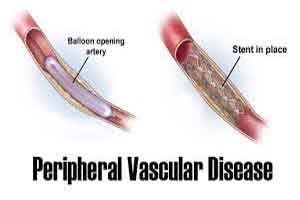- Home
- Editorial
- News
- Practice Guidelines
- Anesthesiology Guidelines
- Cancer Guidelines
- Cardiac Sciences Guidelines
- Critical Care Guidelines
- Dentistry Guidelines
- Dermatology Guidelines
- Diabetes and Endo Guidelines
- Diagnostics Guidelines
- ENT Guidelines
- Featured Practice Guidelines
- Gastroenterology Guidelines
- Geriatrics Guidelines
- Medicine Guidelines
- Nephrology Guidelines
- Neurosciences Guidelines
- Obs and Gynae Guidelines
- Ophthalmology Guidelines
- Orthopaedics Guidelines
- Paediatrics Guidelines
- Psychiatry Guidelines
- Pulmonology Guidelines
- Radiology Guidelines
- Surgery Guidelines
- Urology Guidelines
SCAI guidelines for device selection in peripheral vascular disease treatment

New guidelines to address the selection of specific categories of devices for treatment of peripheral vascular disease (PVD) through endovascular therapy (EVT) are released by the Society for Cardiovascular Angiography and Interventions (SCAI). The guidelines are published in the journal Catheterization and Cardiovascular Interventions.
The guidelines were authored by Dmitriy Feldman, MD, FSCAI, and associates with an objective to provide a review of comparative effectiveness data, including safety and efficacy of femoral-popliteal (FP) devices, and to provide clinicians with guidance and recommendations for device selection when these devices are intended as the definitive or adjunctive therapy.
EVT involves the use of minimally invasive procedures that are done inside the blood vessels for the treatment of PVD. However, there is widespread uncertainty about device selection for EVT due to clinicians having many options and opinions with limited data to distinguish between them.
The SCAI writing group reviewed and considered data on safety, efficacy, and cost-effectiveness when making device-specific recommendations. Data sources included randomized clinical trials, meta-analyses, nonrandomized trials, observational studies, case series and registry data.
The guidelines, which makes recommendations for both definitive and adjunctive therapy scenarios, identified several areas for future research, including trials on value and cost-effectiveness of devices in specific clinical circumstances and lesion subsets. In addition, the guidelines recommend that future studies adopt the Peripheral Academic Research Consortium (PARC) definitions for clinically meaningful outcomes and endpoints. The recommendations in this consensus guidelines document are a first step to provide clinicians with relevant anatomical scenarios to guide device selection based on strength and quality of evidence for comparative effectiveness, durability, and expert opinion.
"SCAI has a long history of prioritizing quality initiatives in the field of endovascular therapy for peripheral artery disease. Device choices for endovascular therapy, particularly in the femoral-popliteal interventions, remain challenging due to a wide spectrum of available device options and a paucity of comparative effectiveness data," said Feldman. "Current guidelines do not address the selection of specific devices when endovascular therapy is indicated. This is the first SCAI-led device-focused consensus guidelines document, which provides a focused review of comparative effectiveness and safety data for femoral-popliteal devices," Dr. Feldman continued.
For further information click on the link: https://doi.org/10.1002/ccd.27635

Disclaimer: This site is primarily intended for healthcare professionals. Any content/information on this website does not replace the advice of medical and/or health professionals and should not be construed as medical/diagnostic advice/endorsement or prescription. Use of this site is subject to our terms of use, privacy policy, advertisement policy. © 2020 Minerva Medical Treatment Pvt Ltd